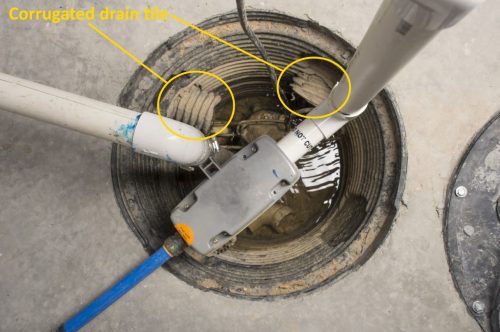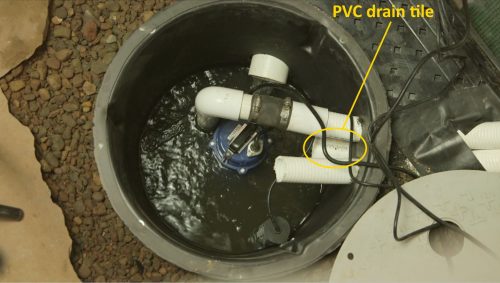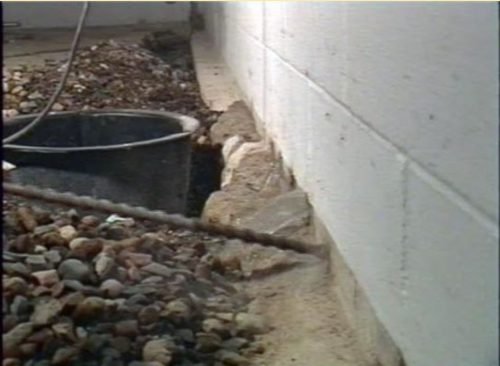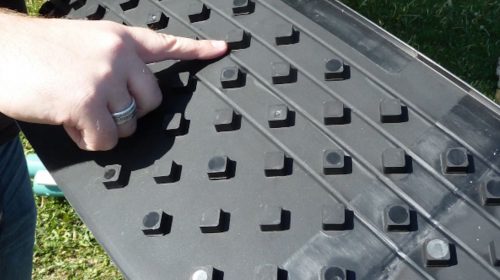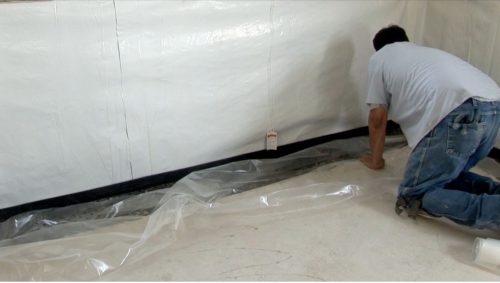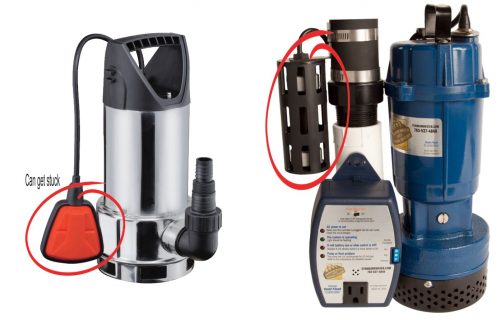This is a guest blog post by Steve Grohn, CEO of Standard Water Control Systems. We occasionally publish guest blog posts by invitation only.
Today we’ll discuss basement waterproofing systems. But before you even consider installing a basement waterproofing system there are several other considerations. Check your gutters and downspouts to make sure they are working properly and moving rainwater away from the house. Take a look at your grading. There should be a gentle slope away from your home. If you have a gutter or grading problem, these simple steps may be all you need to do. Now, if all of that is taken care of on your home, and you still get water in your basement, then a waterproofing system may be your next step.
There are a number of ways to waterproof your basement. According to the University of Minnesota, the best solution is exterior drain tile. If you’re building a house, exterior drain tile is a great way to go. If you are planning to retrofit a water control system, the U of M suggests a below-the-slab rigid PVC drain tile system. The reason is cost. Retrofitting an exterior system means removing landscaping close to the house, dealing with sidewalks and decks, and THEN putting it all back after the job is done. For existing homes, they suggest the interior system because it’s an efficient use of your money.
Why is it called drain tile?
Years ago pipes used for this purpose were made from tiles of fired clay. These ceramic channels were similar to terra cotta pipes. The term drain tile simply follows through to today.
Why use rigid PVC?
Drain tile comes in a variety of configurations but the two most common are flexible corrugated pipe and rigid PVC pipe. Flexible corrugated pipe is more often required by code which, along with its lower cost, might be why so many contractors use it. In the picture below you can see the corrugated pipe where it enters the sump basket in two different places.
Installing rigid PVC is a better solution than flexible corrugated pipe, however. There are several reasons for this. 1. Corrugated pipe goes into the trench like a roller coaster and holds water at its lowest points. Rigid PVC can be installed so you have a smooth downhill slope to the sump basket. 2. Corrugated pipe holds excess water in the corrugations. 3. The slits in the corrugated pipe are narrow enough that minerals in the water can bridge the gaps, making your system less efficient. The holes in rigid pipes are larger and much more difficult to bridge. 4. Many cities require corrugated pipe to be installed with a filter on it. It looks like a sock pulled over the pipe. These filters can become clogged and your system’s efficiency can be seriously compromised.
Installation is a messy job
No two ways about it, this is a dirty, dusty job and steps should be taken to minimize the impact on both you and your home. Doorways and vents should be sealed with plastic, and air scrubbers with HEPA filters should be used to help keep the dust down. The company doing the work should take care of your belongings as well; putting plywood on your grass, using rubber buckets to move debris from your house and anything left in the basement should be covered with plastic. Once the job is done you may want to have your ductwork cleaned.
The installation process
For interior drain tile installation, the crew will jackhammer the concrete around the perimeter of the basement about 18 inches from the wall. Then a trench is dug, starting at the furthest point away from the sump basin. This will be the highest point for the drain tile. The slope of the trench is ⅛” per linear foot or 1” per 8’ section of pipe. Washed rock is poured into the bottom of the trench to keep the drain tile off the dirt preventing any dirt or mud infiltration. The crew then installs the drain tile and covers it with more washed rock to act as a drainage and filter medium. When rigid drain tile is installed properly, like this, you never have to worry about it plugging up.
Holes are drilled in each and every concrete block that sits on the footing to drain water quickly and efficiently. Then a cove plate or dimpled sheeting is often installed to move water from the block into the drainage field. For this we use our patented Diamond Drainage Board that offers better water facilitation and allows the concrete to be replaced at the same thickness as before.
A plastic moisture barrier is laid in to prevent moisture from wicking up through the concrete and to keep the concrete out of the drainage field. Now, when water enters the block it is directed to the drainage field where it is carried through the drain tile into the sump basin where it is pumped out and away from the house.
The choice of sump pump is important. It should be robust enough to take what nature throws at it for many years. We install a 1/3 horsepower, industrial-grade sump pump capable of moving 2770 gallons of water per hour at a 10’ head (the most common vertical measurement we see). For our purposes head is measured as the pumping capacity of a vertical column of water. The shorter the head, the more water you can move per hour.
Also, a note about float switches that turn your pump on and off automatically. We prefer floats that work vertically as opposed to those that tend to swing out and away from the pump because they can sometimes get caught on the side of the sump basket and stuck in the on or off position. Vertical floats are attached next to the pump or on the wall of the sump basket and are much less problematic.
Discharge pipes should be considered carefully, as these are most susceptible to freezing in the winter. We install seamless pipes guaranteed to never leak or break. This is also a good time to install a second discharge pipe in case you ever want to install a backup pump system. Beware of systems that simply add a backup pump to a single discharge pipe. When you need extra pumping capacity to take on an unusual volume of water, you also need additional pipe capacity.
Battery backup systems are a good choice for real peace of mind. Choose one with a pump that moves the same, or close to the same, amount of water as your main pump. Attach it to the second discharge pipe you installed and you should be able to handle anything mother nature throws at you, water-wise.
Conclusion
If you’re going to have a basement waterproofing system installed, make sure the company doing the work is licensed, bonded, and insured. Check their references and make sure their customers are satisfied. And make sure to look into the warranty the company offers.
A proper drain tile installation offers homeowners peace of mind and confidence their basement will be dry for years to come.
https://standardwater.com/services/basement-waterproofing/

